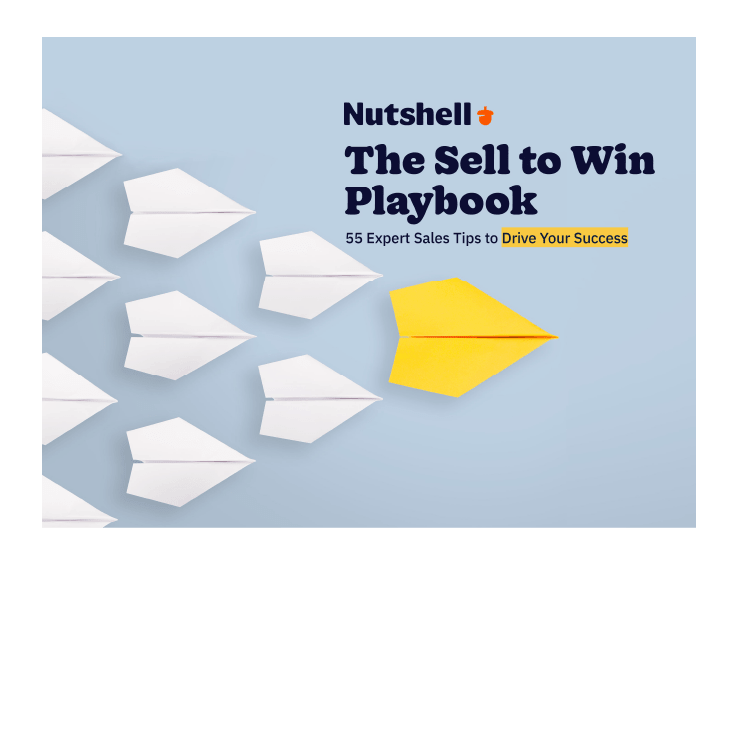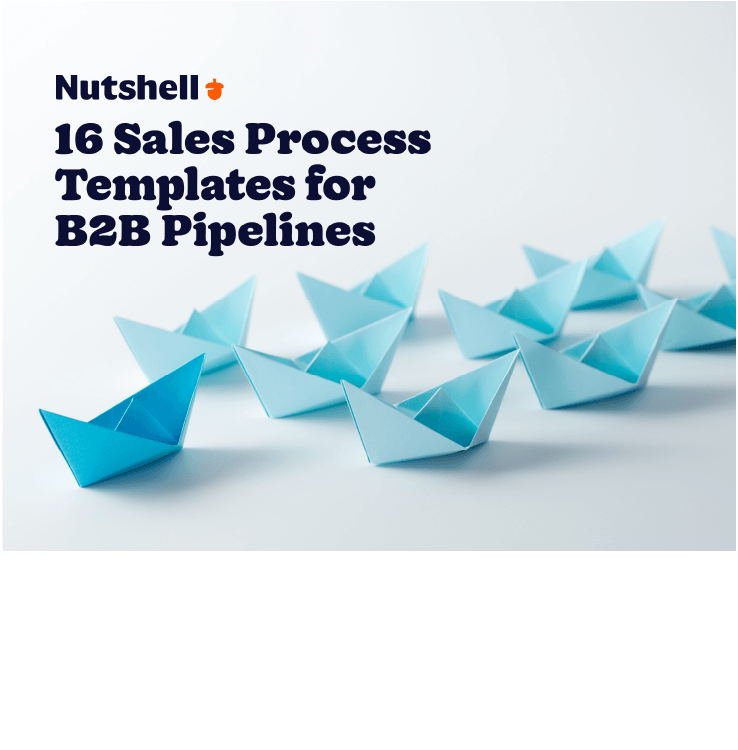
How you approach your sales pitch could be the difference between a hard no from your prospect or a high-value deal. As the saying goes, first impressions last, which is why we’ve compiled this list of sales pitch examples to help you get the conversation started on the right foot.
But what does a good sales pitch look like, and how can you design a winning sales pitch of your own? We’ll answer these burning questions and more below—so keep reading.
In this post, we’ll look at 10 sales pitch ideas that will help you create your own. We’ll also outline some good and bad examples for each.
A sales pitch is a concise, persuasive speech that explains what your product is, communicates its value, and encourages the customer to make a purchase.
It’s your chance to turn a prospect’s interest into action. But it can also make or break a deal. If your buyer isn’t hooked by what you have to say, they likely won’t purchase your product.
You may develop a winning sales pitch structure based on your most common sales scenario. But there are different ways to engage with your prospects, so adapting your pitch to the situation at hand is crucial.
The primary sales pitch categories you will likely encounter include the following:
The Sell to Win Playbook collects 55 of the best expert sales tips we’ve ever published. Download it today!

Building a solid pitch requires some thought. With careful consideration, you can create a pitch roadmap to guide you through the conversation. When planning your pitch, try to stick to the following proven framework.
Step one is to highlight or pose a question related to the problem your product or service will solve. You could open with a real-life example or impactful statistic that illustrates the gravity of the issue and the need to resolve it.
Let your prospect know what your company offers and what sets you apart from the competition. Focus on the problem identified and what your product or service does to solve the issue. Highlight the benefits they can look forward to when working with you.
Next, you’ll provide the prospect with more details on how you and your team will help their business. What steps will you take, how will you approach them, and what makes your method unique? Provide as much detail as possible, but keep your explanation concise and engaging.
Building a relationship with your prospect begins with trust. And you can establish trust in several ways, including:
In closing, ask your prospect an open-ended question to spark a conversation. In other words, ask a question your prospect cannot answer with a simple “yes” or “no.”
Some examples include the following:
Now that we’ve pinned down the basic structure let’s dig into some of the best sales pitch examples to boost your close rate.

Preferably a question that compels them to see their problem from a different perspective. If the question promises valuable information, they’ll want to know the answer and will stay engaged through the next part of the pitch.
Good Example: A digital marketing sales rep might start a pitch with, “Did you know Instagram is currently working against you?” This question hints at important information that they’re missing and makes them reconsider their current social media strategy. The sales rep can then provide an answer that aligns with the value of buying their social media services.
Bad Example: If your question isn’t compelling enough, your customer might not stick around for more of your pitch. “Are you looking for a way to _____?” is a commonly used (but very ineffective) question that PhoneBurner warns against since it’s worded in a way that’s likely to elicit a “no” response. Your opening question should have your target dying to know more.
This pitch follows a three-step process. Start by stating a truth. Then, introduce another truth that contradicts the first truth. Finally, bring in your product and show how it can resolve the problem.

Good Example: In an episode of Shark Tank, the creators of DARTdrones used the dichotomy technique effectively in their pitch. They started by explaining that drones are a beneficial piece of technology. Then, they contradicted this truth by stating that drones are prone to crashing. Their solution was their training course for drone pilots.
Bad Example: If your product doesn’t offer a realistic solution for the problem, the dichotomy won’t be effective. Make sure you draw a clear line between your product and the problem introduced in your pitch.
As Ryan Dohrn says, “People remember stories 75% of the time. People remember facts and stats less than 1% of the time.”

Stories are engaging. Once a buyer is emotionally invested in your story, they will be more likely to care about your product. But avoid introducing your product at the beginning of the story. It’s best to weave in your product during the middle or end once the listener is fully engaged in what you have to say.
Good Example: During his pitches, Backroads CEO Tom Hale likes to tell the origin story of founding his travel company. Hale has always disliked mass tourism, and one night while working in Las Vegas he woke up in a cold sweat with a brilliant idea. He got to work and by 8 AM had a completed plan for Backroads, a slow-tourism outdoor-focused travel company. This story works with his prospects because it shows that there is authentic passion behind the product.
Bad Example: If your story is confusing or boring, your customers won’t be interested. If that happens, they likely won’t feel the emotional attachment you were counting on. Remember, your company’s story doesn’t need to be a verbatim account of everything that happened—keep the good parts and skip over the filler.
Whether you’re building your first sales process or overhauling an existing one, these Nutshell-approved templates will give you a great head-start.

Like they say, flattery will get you everywhere. People like being complimented, so use this to your advantage during your sales pitch. Sure, the customer might realize what you are doing, but deep down, they’ll be pleased and will have a positive impression of your pitch.
“They only made this specific model of laptop in a limited run to test the market.”
Good Example: This suggestion from Investopedia is a perfect example of a sales pitch with the right amount of flattery. As you can see, it doesn’t explicitly complement the prospective client. Instead, the sales rep subtly compliments the client. By mentioning this was a “limited run” product, the sales rep shows that the client is important or special enough for this exclusive product.
Bad Example: If a sales rep over-compliments the potential customer, particularly on personal attributes (“gee, that’s the sharpest tie I’ve ever seen!”), it can feel inauthentic or creepy. Make sure to present your flattery so that it comes across as genuine and helps build a positive rapport with the customer.
Instead of overwhelming your prospects with endless facts, choose three key elements that you want them to retain in their minds. This will help your buyer remember your product while helping you keep the pitch concise.
Good Example: Of course, your product has more than three exciting aspects, but you need to narrow down the key points to make this pitch effective. If you pitch a food delivery app, the three points could be: 1) ease of using the app, 2) how quickly the food is delivered, and 3) customer satisfaction reviews. If you’re pitching a complex SaaS product with tons of bells and whistles, do as much research as you can upfront to present the prospect with the three benefits most relevant to their specific business.
Bad Example: While simplicity is usually the best policy, it can also get you in trouble here. Speaking from experience, we know that almost every CRM tool on the market claims to be easy to use, powerful, and affordable. In a crowded market, you need to get specific. So, what are three selling points you can make that your competitors can’t?
Have you ever thought you were about to close a deal only to have the customer drag their feet? It’s frustrating to put in the work only for a customer to delay the deal. During your pitch, it helps to create a sense of urgency so the customer will feel compelled to close the deal before they float away.
Good Example: Play off of FOMO (fear of missing out) during your sales pitch. Imagine a sales rep for an advertising agency pitching their services to a potential client. During the pitch, the sales rep should mention that they only have the bandwidth to accept a “few additional clients” at the moment. This shows the potential client that they need to decide immediately to avoid missing out on the opportunity to work with the agency.
Bad Example: Telling the client to “take their time” or to “reach out when they are ready” doesn’t create a sense of urgency. Instead, this lets the client off the hook and encourages them to drag their feet.
Words can only go so far. Instead of overexplaining the product, let the customers try it out for themselves. When a customer has the chance to see the product in action, they’ll understand how it works and why they need it.
Good Examples: In this video, you’ll see the salesman Joe Ades demonstrating his product in New York City’s Union Square. Yes, he’s still talking about the product. But as he speaks, he peels the carrots. With a product like a vegetable peeler, showing how it works is more effective than just talking about it.
United Building Maintenance uses an effective tactic to differentiate its commercial cleaning company. When their sales reps arrive at a prospective client’s building, they walk the halls and speak with the cleaning staff. They point out their inefficient cleaning tools and explain how UBM’s commercial products will make the cleaning job easier. This pitch works because UBM describes how its products are more efficient than the competition.
Even if you’re selling a complicated product, a simple demonstration of the tool can be very persuasive in showing a prospect that what you’re selling is easy to use and genuinely helpful.
Bad Example: The biggest mistake when using a demo in your sales pitch is not making sure your product works smoothly ahead of time. Run the demo a few times before doing it in front of your customers. Nothing ends a sale faster than a demonstration showing your product doesn’t work.
Emotions are a powerful tool. Play on these during your pitch. Of course, you should avoid coming across as manipulative, as this will turn off your customer.
Good Example: Your prospective customer might feel stressed about “breaking up” with their current supplier. Play off this emotion during your pitch by coaching the client through the “break-up” process. Your potential customer will feel relieved that they have a strategy for ending their current business relationship.
Bad Example: Playing off emotions just to get a reaction won’t be effective. Customers can easily tell when they are being emotionally manipulated, which won’t make them interested in your product. As a salesperson, your presence should relieve the prospect’s tension—because you’re a helpful, trusted advisor—not add to their tension.
While you don’t want your pitch to seem dry, feel free to toss in a few hard facts to back up your pitch. You need your customers to trust you—and for some people, objective data sets their minds at ease. As long as you can provide legitimate sources for any numbers you throw out, a few well-placed stats will make you seem more credible.

Good Example: Use easy-to-interpret charts and graphs to explain your supporting data. Introduce the statistics in digestible chunks instead of throwing them all out at once.
Bad Example: The phrase, “What if I said …” does not instill confidence in your sales pitch. Avoid this or similar sentiments when you are discussing facts. This phrase makes it seem like you can’t prove your claim.
At the end of the day, your pitch is all about convincing the customer to buy your product. Tailor your pitch to each customer instead of using a one-size-fits-all pitch every time.
Good Example: Imagine you are tasked with selling Chromebooks. When you pitch the product to a school, you would highlight how the Chromebook can boost test scores and help students learn 21st century skills. But if you pitch the Chromebooks to a hospital, you would explain how this product can help streamline the patient check-in process and make it easier to store valuable patient information. The same pitch won’t be effective for both groups. Remember to adjust your pitch so it relates to each customer.
Bad Example: Using the exact same pitch every time makes it evident that you didn’t consider the customer. All you have to do is tweak a few phrases or swap out some data points to keep your pitch relevant for each prospect.
While the above basic pitch framework and examples offer comprehensive sales pitch guidance, you could include a few extras to take your delivery up a notch.
Knowing what your prospect might oppose regarding your offering will help you tackle potential objections. But you’ll need to have done a fair amount of research or have some experience with client engagement to pull this off.
Therefore, try to anticipate common objections that might arise based on past experience, and ensure you cover those with sound solutions before the prospect has the chance to object.
Is your product or service customizable? Offering a tailored solution is a great way to set your service apart from the competition. It lets your prospect know that you are sensitive to their particular needs and that you’re willing to adapt things to ensure those needs are met.
If you have the data, run the numbers to show your prospect what they can expect in terms of ROI.
Perhaps your product or service helps businesses save on expenses, in which case you should provide a basic breakdown to show the average savings percentage.
If your product or service positively influences productivity, offer a quantitative example of how much your solution could impact the business’s revenue and growth.
As you work on your own sales pitch, remember to keep it concise. Regardless of which techniques you use, it should be a short speech that immediately hooks your customer. An effective sales pitch is short, convincing, and leaves the customer wanting more.
Choose the model that best fits your business and see how we help teams like yours close more deals.


Join 30,000+ other sales and marketing professionals. Subscribe to our Sell to Win newsletter!